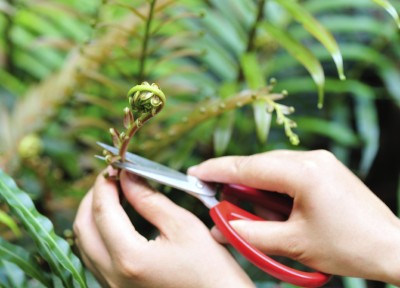






It’s tempting after a lovely walk in nature to want to bring home some of its beauty. Perhaps you spied an unusual flower or small tree that would look fabulous in your landscape. Wild collection is frowned upon by the Forest Service, plant experts and many others. But why is wild harvesting plants seen in a bad light? These aren’t just free plants but part of complex ecosystems. They can also pose real dangers to your landscape and other plants and animals in your care. The following is a breakdown on what is wild harvesting and what can and can’t be collected.
There is a huge variety of unique flora in our parks, forests and waters. Gardeners whose landscape mimics the natural landscape may find themselves enticed by the plants in public spaces, but in most states, plant harvesting from wild sources is illegal. There are also other reasons not to remove plants from their natural state.
You may think wild harvesting is simply gathering blackberries in the forest or mushroom hunting. There is some truth to this, but it also refers to collecting wild plants and taking them home for personal use. Wild harvesting plants can destroy fragile ecosystems and, in some cases, an animal’s habitat.
Additionally, many plants in nature have diseases or come with tag-a-long invasive or nuisance species. This is particularly common with water plants, which may bring into your pond such weeds like milfoil or Elodia. These can invade your system, choke out other plants and clog your filters. Introduced species with disease could kill your fish or other domestic life. This is one of the clearest dangers of wild harvesting.
Plant harvesting from wild sources is never a good idea and may even be against the law.
As long as you aren’t gathering native plants, wild foraging is fun and a great way to spend the day in nature. Before you go collecting, check with the local forestry service and obtain any permits necessary. You also need to ensure the plants are in season. The rangers can usually give you a guide or map to known locations of your desired food or herb.
Never collect things like herbs or mushrooms if you are not knowledgeable of these plants. One of the dangers of wild harvesting edibles is that you might mistake one food for another as in the case of poisonous mushrooms. Many a forager has ended up in the hospital, or worse, from ingesting the wrong food.
There are a few basic wild harvest do’s and don’ts to remember when gathering edibles:
If you have any doubts about a plant’s level of safety, leave it alone and don’t take any chances. Follow these basic guidelines and have a fun and productive gathering trip.
Learn About The Safety For Indoor Gardens
Learn About The Wisteria Bonsai
What is Organic about Organic Plants?
What Is A Root Zone: Information On The Root Zone Of Plants
Learn About Plant Bracts: What Is A Bract On A Plant
What Is A Master Gardener: Learn About Master Gardener Training
Learn About The Pollination Process And Plants That Need Pollinators
Gardening - What Are the Benefits?
What There Is To Know About Organic Horticulture
Leaf Identification – Learn About Different Leaf Types In Plants
What Is Plant Layering: Learn About Plant Propagation By Layering
What Is Hybridization: Information About Hybrid Plants
Garden Fitness: Learn About Exercise In The Garden
Plants For Pollinators: Learn About Pollinator Friendly Plants
Copyright © www.100flowers.win Botanic Garden All Rights Reserved